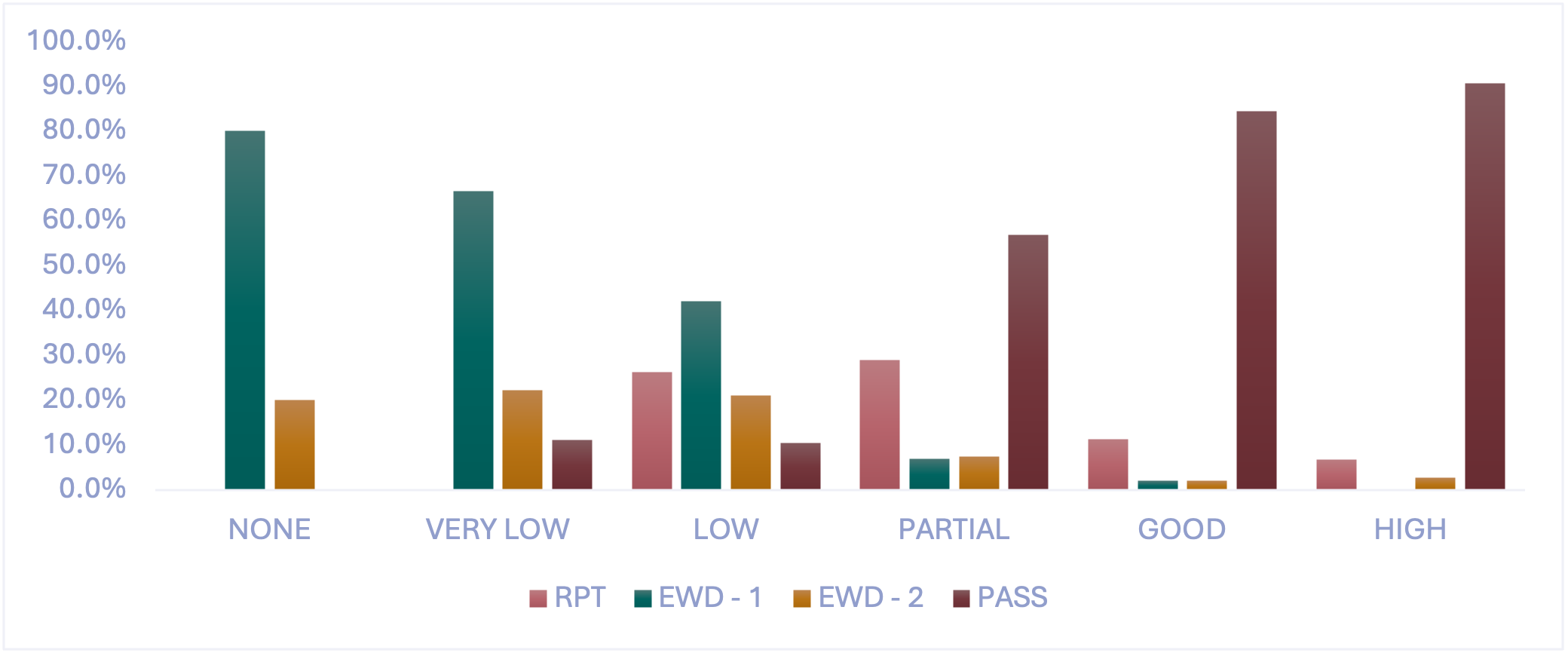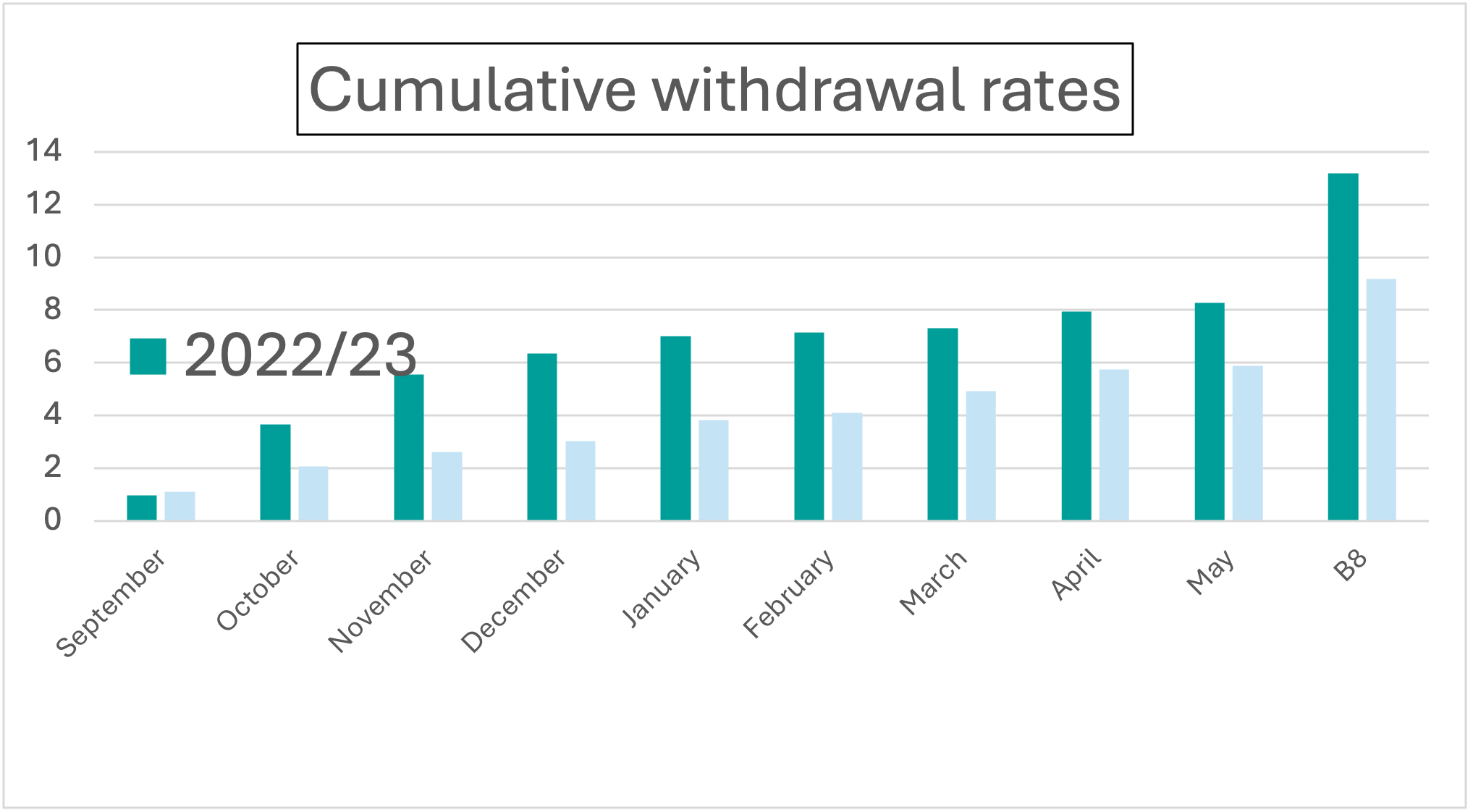I don’t remember ever making a conscious decision to go to university – it was just the “next” thing to do. But this is not true of all students. The phrase “non-traditional” acknowledges the diverse experiences and backgrounds of many university students.
Having taught at both a Scottish further education college and a widening participation university, I continue to be struck by the diverse life experiences, wealth of real-world knowledge, and backgrounds that students bring with them into higher education. These students have made a conscious decision to attend university, fuelled, at least, by a desire for a future that would not otherwise have been open to them.
Little wonder, then, that many new students juggling these responsibilities and challenges don’t find starting and succeeding at university plain sailing. They need time and support to adjust to different ways of learning, teaching and assessment, and to build new relationships. Their confidence may take some knocks, and they may question why they are even at university and whether they have made a mistake in enrolling. Unless students can manage the transition to university alongside the complexities of work and other responsibilities, they may become trapped in a cycle of despair that eventually ends – voluntarily or as a result of academic failure – in withdrawal from university.
Senior staff at universities responsible for student outcomes are prioritising student success and attainment. This is where learning engagement data comes in, with changing or declining patterns offering an early hint that a student may not be coping. If attendance data alone is relied on, by the time a student stops attending class, it may be too late to recoup lost learning.
Universities driving action to support engagement is indicative of a shift in responsibility for engagement from the individual student to the university. Institutions in England are held accountable for student continuation, attainment and progression via the regulator. But beyond regulatory pressure, there is a moral, educational, and financial responsibility for any institution to focus on student outcomes. Using data to pre-empt possible issues that could result in student withdrawal is key to maximising an increasingly limited resource. The example of the University of Keele’s approach to supporting transition into foundation years illustrates how this can be done.
Diving in early
More non-traditional students are enrolling in the foundation year programme at the University of Keele than ever. As Director of Foundation Year, Simon Rimmington’s objective is to help those students remain at university and develop skills that will help them progress to the undergraduate degree programme.
Simon’s research into how foundation year students participate in their learning demonstrates the value of early engagement and transition activity on end-of-year outcomes. Using objective data available within their student engagement analytics platform, StREAM, foundation year academic mentors can intervene early when students appear to be under-engaging.
Near real-time data allows the team to predict outcomes from as early as two weeks into the programme, broadening the options available to students and providing meaningful opportunities to re-engage. Before the introduction of StREAM, there was no way to gauge how successful students would be in their semester one modules. Student performance data wasn’t available until the beginning of semester two, making it hard for staff to provide targeted support to students that would improve their chances of success.
The data reveals the importance of engagement from the first two weeks of study and identifies students who take longer to develop academically purposeful behaviours. The correlation between engagement and attainment is also evident in the chart below. This data is available to students to encourage self-reflection on their learning behaviours.
One in five students in each of the at risk categories of “none, very low and low engagement” were withdrawn at the end of the academic year, whereas 40 per cent of students with partial engagement passed the year, rising to over eighty per cent for highly engaged students.

Engagement rating for the month of November 2022 and end-of-year student outcomes
The Keele University foundation year team reviewed the data in real time and sought to intervene positively to retain students and improve their engagement. This Sankey diagram shows how students moved between the six engagement categories (none, very low, low, partial, good and high) for the year. Shown on the left is the proportion of students in each engagement category for weeks 0 – 3 of semester one. The middle column shows how the students’ engagement category changed by the end of the semester. The right-hand side of the diagram shows the transition from semester one to average engagement by week four of semester two.
 Engagement patterns for the Keele Foundation Year 2023-24
Engagement patterns for the Keele Foundation Year 2023-24
It is clear that students’ initial engagement levels within the first few weeks of entering higher education are key. Those who were more engaged at the beginning were more likely to succeed.
One way to encourage higher engagement from the get go at Keele has been giving students opportunities to discuss their own circumstances with their academic mentor, with whom they agree on how to proceed. This may include a plan to re-engage with their learning or advice on accessing specialist support. In some cases senior academic mentors may even suggest a leave of absence and a restart during the next academic year. Rather than being seen as a sign of failure, either personally for the student or on continuation metrics, mentors are finding these interventions allow positive and realistic conversations about future participation in higher education.
Engagement data is insufficient in and of itself to impact student attainment and continuation. Data can never tell you why a student is disengaging, no matter what we might “know” about a student. If engagement analytics had been around while I was at university, it would not have been possible to explain why I disappeared off the radar for a month right before my final exams (family bereavement). However, what StREAM analytics can do very effectively is act as an early warning flag that signals when a friendly, human-centred conversation with a student is required.
Thereafter it is up to the ecosystem within an institution to kick into action and reach out. At the end of the day, if anything can help to break the cycle of despair that some of today’s students are trapped in, it will be that human, friendly touch – concern, care, being there, showing the student that they matter, that someone has noticed that all may not be well with them.

Cumulative withdrawal rates for academic years 2022-23 and 2023-24
This data-informed approach to supportive outreach for under-engaging students at Keele is yielding positive results that are particularly impressive given the compressed timeframe of the Foundation Year Programme. Simon reports a reduction in non-continuation rates of Foundation Year students when comparing the same periods in 2022-23 to 2023-24.
By the end of the teaching period, there had been a four percentage point improvement in retention, equating to approximately 30 more students completing the academic year when previously they may have withdrawn or been withdrawn, based on 22-23 withdrawal rates. In saved fee income alone, this represents over £100,000 (based on home student feel levels) just from within the Foundation Year. In these difficult financial times, saved fee income is a calculable return on investment over and above the software cost that can be ploughed back into those areas that need it most.
While we may expect that it is the non-traditional students who need tailored help from the very start of their studies (and even before) if they are going to be prepared to engage in a way that enables their future success, one of the advantages of using analytics data is that it picks up all students at risk of disengagement – irrespective of family or educational background, parental income, personal aspirations or motivations or other demographic characteristics. Knowing which students are disengaging from their studies and working collaboratively with them to break the cycle of despair and get them back on track is the only way to turn the dial on those institution level metrics and maximise the potential for real change.
This article is published in association with Solutionpath. Find out more about how engagement data is helping foundation year students succeed at the University of Keele by reading the full case study. The author would like to thank Simon Rimmington, Director of Foundation Year, and Adam Wootton, Director of Education – Foundation Year, Keele University.












